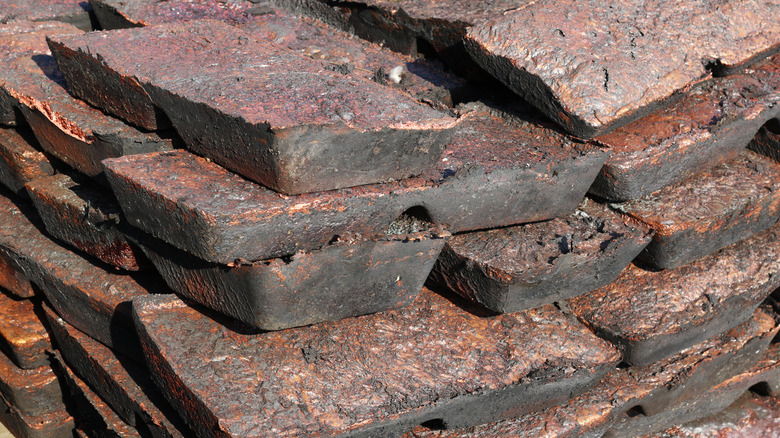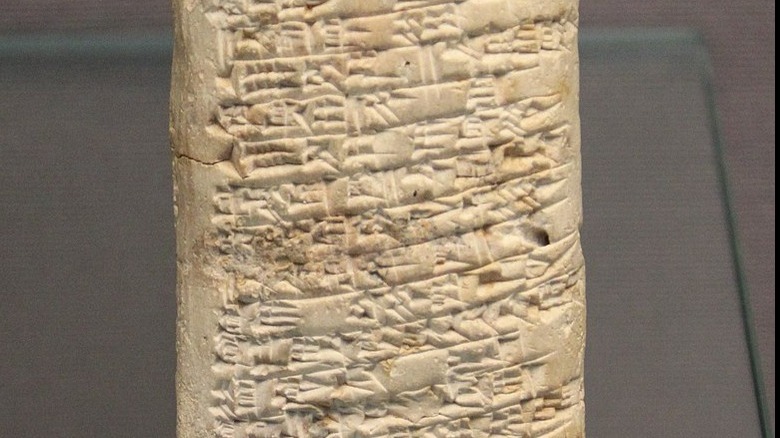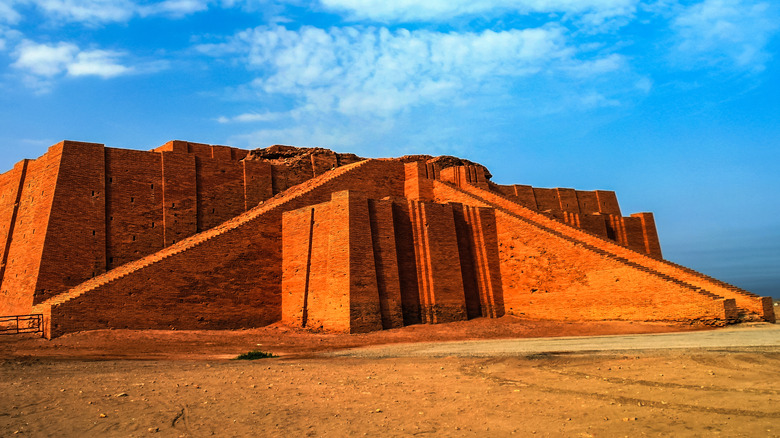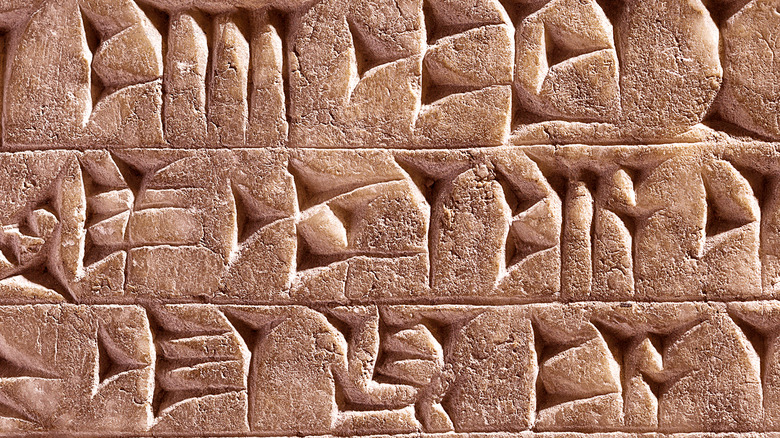The World's Oldest Customer Complaint Is Almost 4000 Years Old
If there's one thing humans love, it's complaining. Just take a look at Yelp or Amazon and you'll see plenty of customers ranting about why the service they received at a local restaurant or the item they just purchased were not up to snuff. But it turns out this propensity to complain is much older than the internet. In fact, it dates back to the beginning of written communication itself in ancient Mesopotamia.
That's the origin of what the Guinness Book of Records states is the oldest written customer complaint. The so-called "Complaint tablet to Ea-nasir" is a full 3,700+ years old. The complaint is written on a clay tablet and dates from B.C. 1750, according to The British Museum. It consists of a letter from a man named Nanni to another named Ea-nasir stating that he has received the wrong grade of copper from the latter.
'You put ingots which were not good before my messenger'
According to Nanni, Ea-nasir committed the two cardinal sins of retail: he sold an inferior product, and he was rude. In the first part of the complaint, Nanni details how he sent his servant to collect copper from Ea-nasir, who had gone to the Persian Gulf to retrieve it and then returned to Mesopotamia (via Joy of Museums Virtual Tours). In the beginning of the letter, Nanni seems to refer to a prior agreement he had with Ea-nasir to have his servant Gimil-Sin collect the copper, according to a translation published in "Letters from Mesopotamia: Official, Business and Private Letters on Clay Tablets from Two Millenni" (via Guinness Book of Records).
"Tell Ea-nasir: Nanni sends the following message," the complaint begins. "When you came, you said to me as follows : 'I will give Gimil-Sin (when he comes) fine quality copper ingots.' You left then but you did not do what you promised me. You put ingots which were not good before my messenger (Sit-Sin) and said: 'If you want to take them, take them; if you do not want to take them, go away!'" The complaint doesn't end there. After laying out his initial gripe, Nanni really gets angry. "What do you take me for, that you treat somebody like me with such contempt?" he asks (via Joy of Museums Virtual Tours).
'You alone treat my messenger with contempt!'
Nanni then indicates that he and Ea-nasir's have a history, according to "Letters from Mesopotamia: Official, Business and Private Letters on Clay Tablets from Two Millenni" (via Guinness Book of Records). "I have sent as messengers gentlemen like ourselves to collect the bag with my money (deposited with you) but you have treated me with contempt by sending them back to me empty-handed several times, and that through enemy territory," he writes. "Is there anyone among the merchants who trade with Telmun who has treated me in this way? You alone treat my messenger with contempt! On account of that one (trifling) mina of silver which I owe(?) you, you feel free to speak in such a way, while I have given to the palace on your behalf 1,080 pounds of copper, and umi-abum has likewise given 1,080 pounds of copper, apart from what we both have had written on a sealed tablet to be kept in the temple of Samas."
Finally, Nanni makes the timeless demand of angry customers everywhere: he asks for his money back. "[I]t is now up to you to restore (my money) to me in full," he concludes. "Take cognizance that (from now on) I will not accept here any copper from you that is not of fine quality. I shall (from now on) select and take the ingots individually in my own yard, and I shall exercise against you my right of rejection because you have treated me with contempt."
'the work that you have done is soooooooo good'
While Nanni's complaint tablet is the most famous complaint against Ea-nasir, it wasn't the only one. Archaeologists found several other complaint letters in his home, according to Forbes. Ea-nasir traded between Ur, in contemporary Iraq, and Dilmun, in modern Bahrain. At first, Ea-nasir seemed to be successfully buying and selling goods for the palace in Ur, but then he started staying longer in Dilmun and his customers began getting antsy for their goods.
One man named Arbituram wrote, "Why have you not given me the copper? If you do not give it, I will recall your pledges." Another named Imgur-Sin said, "May Samas [the sun god] bless your life. Give good copper under seal to Nigga-Nanna. Now you have had me issue 10 shekels of silver. In order that your heart shall not be troubled, give good copper to him. Do you not know how tired I am [of this]?" Another named Ili-idinnam resorted to sarcasm, writing, "the work that you have done is soooooooo good. One year ago, I paid silver in a foreign country; you shall hold back only bad copper. Please bring your copper." Eventually, Ea-nasir's bad customer service took a toll. There is evidence that his business declined because part of his home in Ur was incorporated into another home next door, suggesting he had lost money. He also had to shift from trading copper to land speculation, real estate and even second-hand clothing.
They had to work to put it in writing
Today, making a customer complaint is as easy as typing a few angry sentences on your keyboard. Ea-nasir's customers, however, had to put a lot more work into it. Nanni's tablet and the other complaints found in Ea-nasir's home were written in cuneiform. Cuneiform was developed in present-day Iraq before B.C. 3,200 and is the earliest known form of writing, according to The British Museum. It soon spread throughout the Middle East and was used until the first century A.D.
Instead of using letters in an alphabet, cuneiform used signs that stood in for syllables and sometimes whole words. There were 600 to 1,000 base characters that people could use to write texts like Nanni's letter. Documents were written by pressing a reed into moist clay. The reed make wedge-shaped strokes that give this writing style its current name, from the Latin cuneus for "wedge." The completed tablets then had to be baked, according to Joy of Museums Virtual Tours. So Ea-nasir's customers had to put a lot of work into telling him off! Cuneiform was most commonly written in Sumerian and Akkadian, though there are examples of more than a dozen other languages being used, according to The British Museum. Nanni's tablet was written in Akkadian, Joy of Museums Virtual Tours said.
Ea-nasir's legacy
We know about the complaint tablet to Ea-nasir today because it was discovered by British archaeologist Sir Leonard Wooley when he excavated the city of Ur in the early 20th century, according to Forbes. Ur was an important city in ancient Mesopotamia and was in fact the largest city in the world from around 2030 to 1980 B.C., with a population of around 65,000, according to Joy of Museums Virtual Tours. The tablet was acquired by The British Museum in 1953, where it is still on view today.
While it serves as an example of one of the earliest forms of written communication, the complaint tablet to Ea-nasir has developed a second life on one of the latest communication mediums: the internet. Since at least 2017, it has become a popular meme on sites like Tumblr, Reddit, and 4chan, according to Know Your Meme. For example, in 2021 Bloomberg reported that a trader in Turkey sold $36 million worth of copper that turned out to be painted rocks. "Ea-Nasir is that YOU," someone tweeted in response, according to Know Your Meme.





